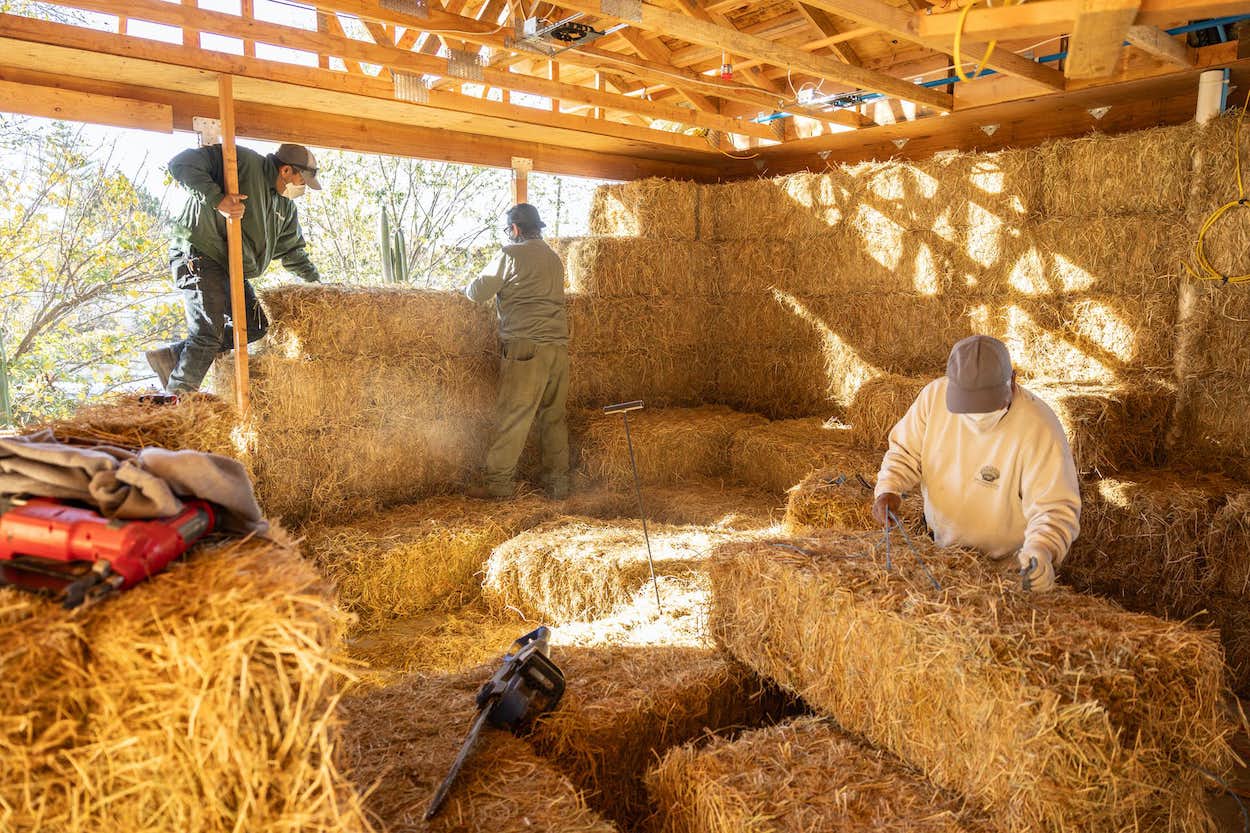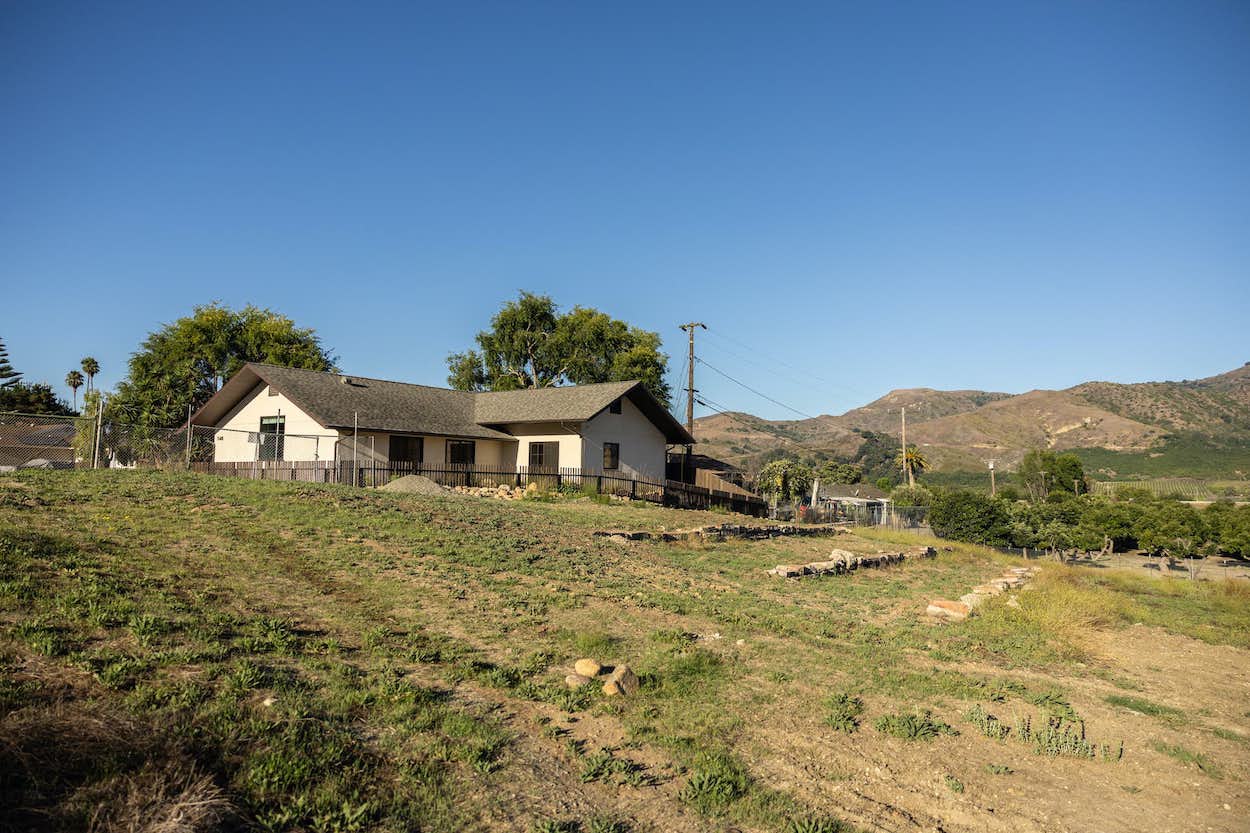Last year, Yvon Chouinard made headlines when he gave Patagonia—the popular outdoor apparel brand he founded in 1973—back to the Earth. (Conscious of the company’s footprint and fashion’s greenwashing problem, the octogenarian’s family transferred their ownership to a trust created to ensure its profits combat climate change and protect undeveloped land.) While the self-described “existential dirtbag” now spends his free time fishing and surfing, Chouinard is still vamping on sustainable ideas that have been percolating in his mind for decades, long before he launched the brand that would make him a billionaire and land him on Time’s list of “100 most influential people of 2023.”
One of those ideas happens to be straw bale construction. A readily available agricultural byproduct left over from wheat, barley, and rice crops, straw can be utilized as either the main structural material or as insulation in buildings. So when Chouinard acquired a piece of land near Ventura, California, he decided to reimagine the quintessential suburban home with carbon-absorbing straw. He enlisted the help of architect and longtime friend Dylan Johnson, who turned out to be an ideal collaborator—his aunt and uncle built a straw bale home in central Washington when he was a teenager. After lengthy permitting, the project was greenlit and they began construction, which was chronicled in a Patagonia-produced short film extolling the virtues of building green.




